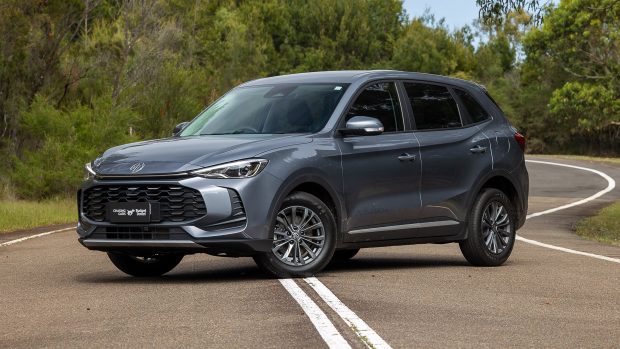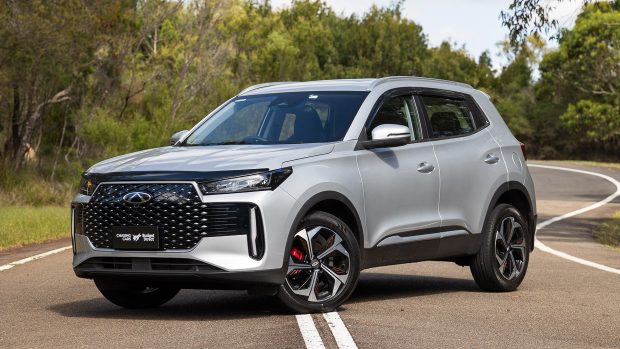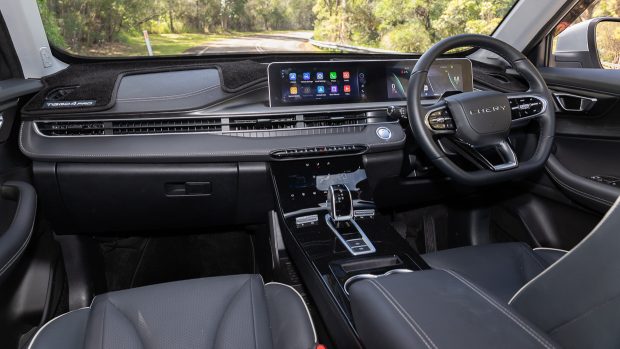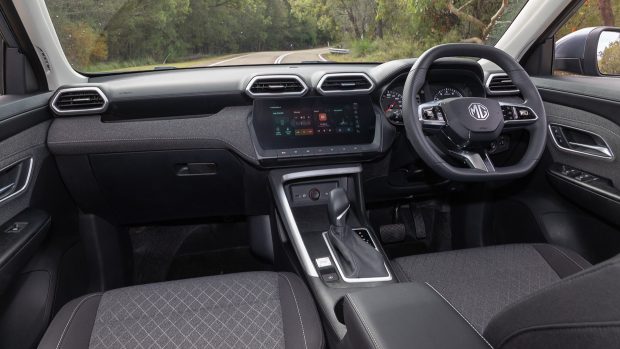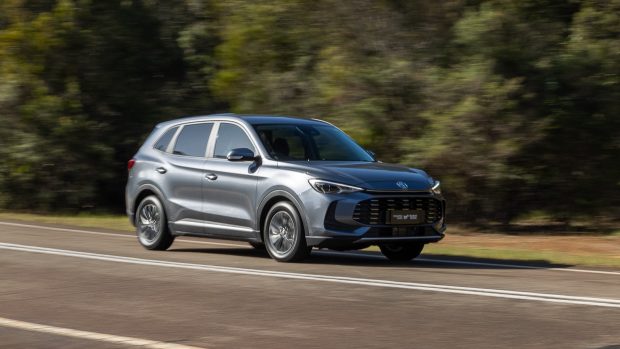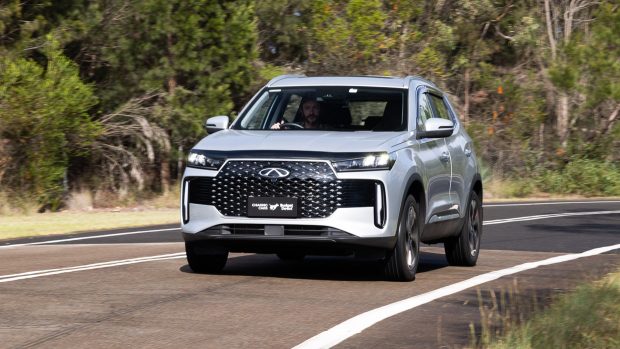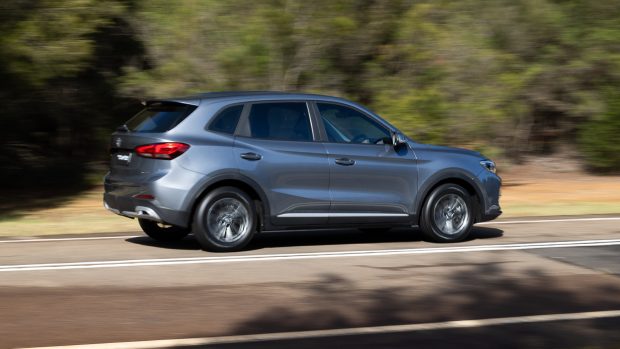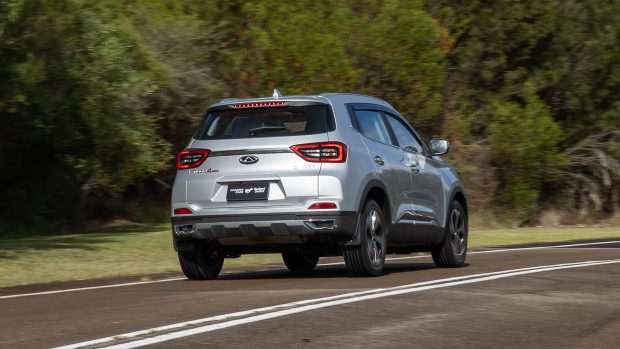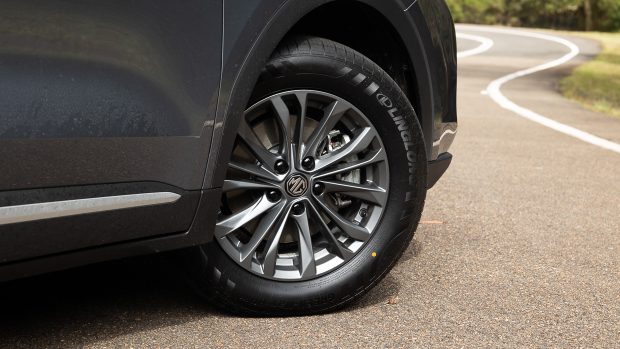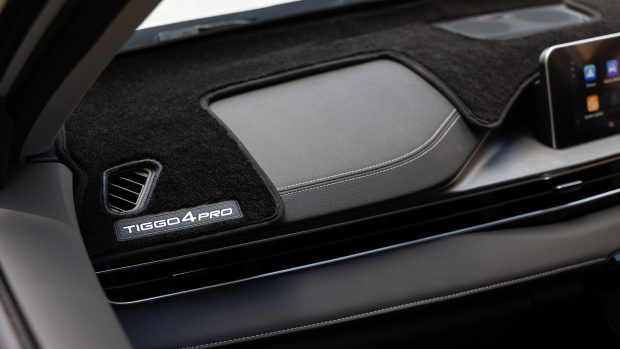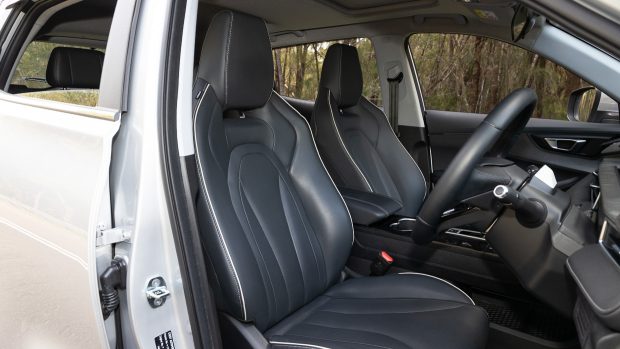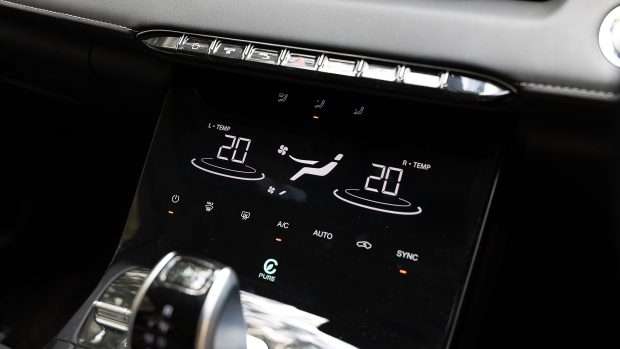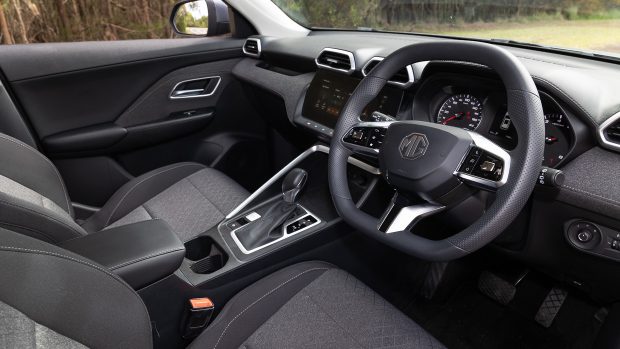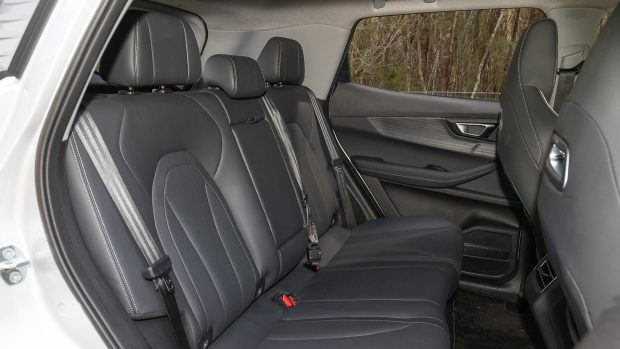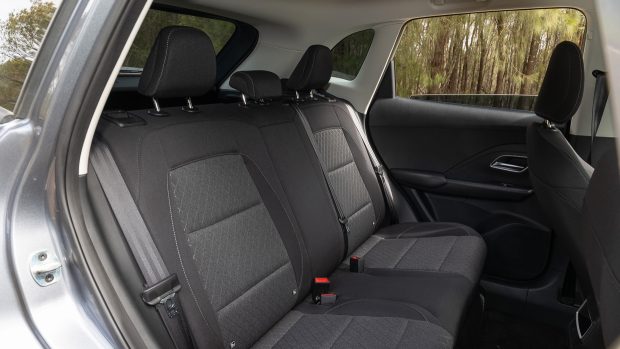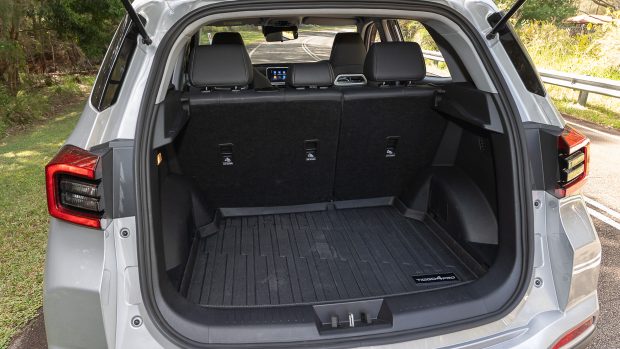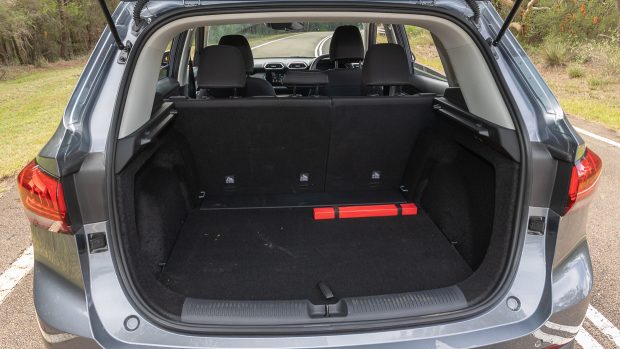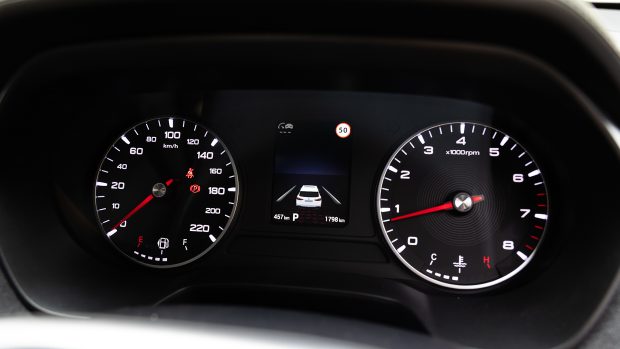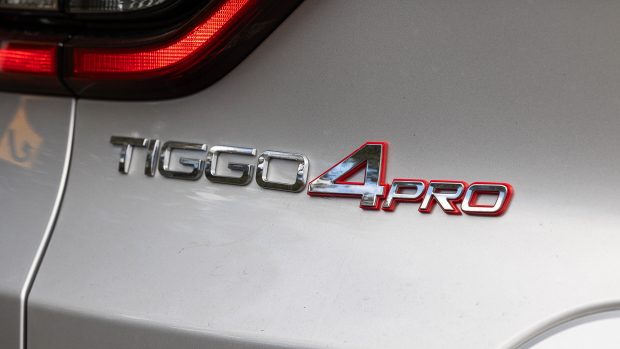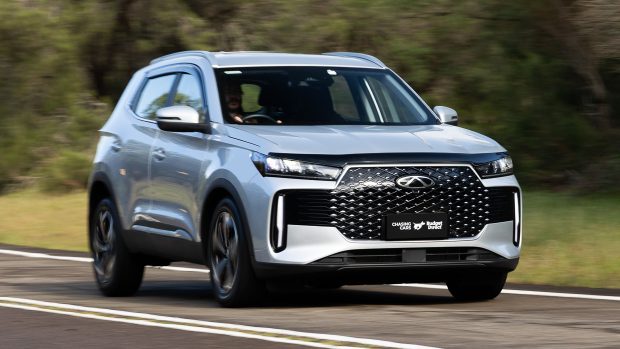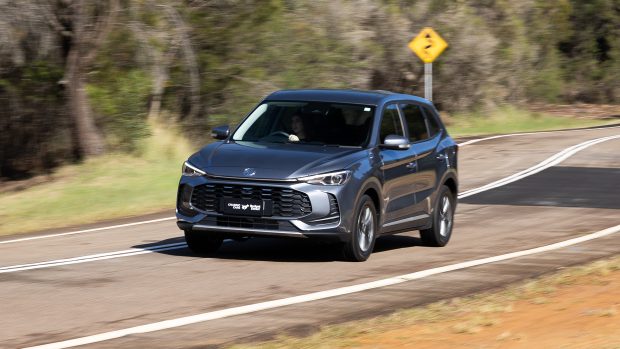-
Car Reviews
- All reviews
- Midsize SUVs
- Small cars
- Utes
- Small SUVs
- Large SUVs
- Large cars
- Sports SUVs
- Sports cars
- Vans
Latest reviews
- Car News
-
Car Comparisons
Latest comparisons
- Chasing Deals
You can get a fully-featured, family-sized SUV for nearly nothing these days, but should you? We test two popular cut-price options and one ends up streets ahead
We’ve said it before and we’ll say it again. The cheap end of the car market was almost in dire straits; Volkswagen Polos costing $30K on-the-road, Kia Picantos over $20K, it wasn’t looking good for the first car buyer.
Just like in the late 1990s when Korea shook up the game, China is doing the same. Except this time, it’s even more vicious. The first-generation MG ZS small SUV under Chinese reign was not a great car. It got people from A-B and little more.
This second-gen model launched with a hybrid option, genuine driving talent and solid packaging. Now a cheaper petrol model is available from $26,990, driveaway, in Excite trim – and that’s what we have on test.
Not to be outdone, even newer Chinese brand Chery swings in with a fruitier 1.5-litre turbo-petrol engine and seriously packed spec sheet with its Tiggo 4 from as little as $23,990, drive-away, or $26,990 like the Ultimate we tested.
Chery has rolled out some mild updates to the Tiggo 4 — previously the Tiggo 4 Pro as pictured — including new rear lights, though no changes to ride, handling or powertrain. A hybrid version is on the way later this year.
Also in the mix is the new-look GWM Haval Jolion, though one was not available for this test and previous tests suggest it probably wouldn’t have run away with victory.
Crucially, these mid-$20K SUVs can all genuinely sit four passengers in comfort, something MG3s and Suzuki Swifts cannot do. No arguing you get a lot for your money with the ZS and Tiggo 4 Pro, but do they really offer value for discerning buyers?
This is a slippery one to define. By the length of the spec sheet, it is hard to beat the Tiggo 4 in ultimate guise.
Heated, power-adjustable seats, a pair of bright 10.25-inch screens, a separate climate control panel, and dazzling speaker trims. On the surface the Tiggo 4 Ultimate does a solid impression of a pseudo-luxury vehicle.
The MG ZS is entirely different. It hasn’t been to TK Maxx to pick up the rejected high-fashion goodies, but headed to the school uniform section at Lowes for its materials.
All models score LED headlights, a 10.25-inch digital instrument cluster, power-adjustable driver’s seat, keyless entry, push-button start, dual-zone climate control, and a bevy of safety systems you’ll see in models double the price.
| Feature | Tiggo 4 Ultimate | ZS Excite |
| Headlights | Full LED | Halogen headlights, LED daytime running lights |
| Vehicle entry | Keyless, push-button start | Key fob, push-button star |
| Wheels | 18-inch alloy wheels | 16-inch alloy wheels |
| Sunroof? | Yes | Essence Hybrid only |
| Seating | Heated, 6-way power-adjustable | 6-way manual adjust |
| Steering wheel | Synthetic leather-appointed | Polyurethane |
| Upholstery | Synthetic leather | Cloth |
| Touchscreen size | 10.25-inch | 10.25-inch |
| Instrumentation | 10.25-inch digital display | Analogue dials, TFT screen |
| Air conditioning | Dual-zone automatic climate control | Manual air conditioning |
| Sound system | Sony 6-speaker | In-house 4-speaker |
| Exterior camera | 360-degree surround | Reverse camera |
What the spec sheets don’t show are build quality inconsistencies, and when it comes to panel alignment, the Tiggo 4 really suffers. We noticed a misaligned bonnet, tailgate, and variable panel gaps on the Chery, where the MG ZS’s bodywork was consistent.
While neither of these small SUVs will get you close to driving nirvana, there is a clear favourite in the driving stakes.
The Chery Tiggo 4 has everything you’d expect to make it the winner. Both use CVT automatics and drive the front wheels, but the Chery significantly outguns the ZS, with an extra 27kW and 50 percent higher torque peak.
The MG is tardy to accelerate. You don’t go anywhere fast with a 64kW/tonne power to weight ratio.
And yet, despite the Chery’s on-paper advantage, on the road its recalcitrant CVT and laggy low RPM turbo response rob rolling acceleration pace, meaning it only reached a 2km/h higher speed in our overtaking test than the much less powerful MG.
Plus, the MG ZS’s CVT (much better calibrated than the MG3’s) is responsive from a dig, meaning it feels just as nippy as the Chery Tiggo 4 out of junctions around town.
Keeping to the 110km/h climbing steep hills on the motorway is loud, though. The MG’s 1.5-litre petrol four-cylinder emits a thin, penetrating note when hovering around 4500RPM on the motorway, though the Tiggo 4’s gravelly grumble isn’t hugely pleasant.
Once you get past the cheap-feeling engine and gearbox combinations of these two, one starts to run away — and it isn’t the Tiggo 4.
Things start with poor visibility. By prioritising exterior styling, Chery has elevated the Tiggo 4’s beltline and shrunk the glasshouse. The A-pillars are also quite thick, meaning you’re always relying on the 360-camera in car parks. The airy ZS is far easier to place on the road.
Adding to this, the MG ZS’s well-weighted and accurate steering is light around town and firms up at speed. The Tiggo 4’s, on the other hand, is nervous. A dead-spot around the centre and sudden ramp-up means you’re always busy on the wheel on the motorway.
There’s more than just the steering contributing to the Tiggo 4’s flimsy on-road feeling. It is like Chery specified ballpoint pen springs for this small SUV.
The pitch and roll is almost comical, like a Citroen 2CV but less controlled. This also means the Chery regularly crashes into its bump stops, both in town and on patchy rural roads.
As a counterpoint, the MG is all fluidity and solidity on the road, which is quite amazing given the two rivals use front struts, rear torsion beams, and ride on identical 2610mm wheelbases.
Unfortunately, neither car is fitted with quality tyres. The MG features Ling Long Greenmax HPs and the Tiggo 4 Giticomfort 520s, which both struggled for grip in wet conditions, meaning wheelspin off the line and low confidence through roundabouts.
The ZS and Tiggo 4 feature four-wheel disc brakes but the MG’s are vastly superior. Our testing showed the Chery took six metres more to stop at worst, oddly getting better after repeated braking to close the gap to three metres.
| Specification | Chery Tiggo 4 Ultimate | MG ZS Excite petrol |
| Price (MRLP / DA) | $26,990 National DA | $26,990 National DA |
| Engine / motive power | 1.5T, I4, MPI | 1.5, I4, MPI |
| Power | 108kW @ 5500 rpm | 81kW @ 6000rpm |
| Torque | 210Nm @ 1740 – 4000rpm | 140Nm @ NA rpm |
| Weight (Tare) | 1388kg | 1266kg |
| Power to weight ratio | 79kW/tonne | 64kW/tonne |
| Suspension F/R | Struts / torsion beam | Struts / torsion beam |
| Wheel and tyre | 18” alloy, 215/55 R18 Giticomfort 520 | 16” alloy, 215/60 R16 Ling Long Greenmax HP |
| Brakes | 4-wheel discs | 4-wheel discs |
We come back to wow-factor against genuine practicality in the cabin. The Tiggo 4’s twin screens and soft-touch surfaces on the dash, front and rear door tops are streets ahead of the MG’s items.
Plus, the Tiggo 4’s build quality is remarkably good, with sturdy construction building on the superficially good material quality — ignore the pictured example’s cheesy dash mat, that’s a dealer accessory.
But there are plenty of shortcomings. The synthetic leather upholstery is hot, sweaty, and marks easily. The seats themselves are unsupportive and very short in the under thigh, though are quite well bolstered. Our example’s power-adjust seats were noisy in operation, too.
A few clever-looking solutions quickly become annoyances, too. That slick Audi Q7-esque climate control panel? It’s not a touchscreen. There are nobs instead, and it just ends up being a total magnet for fingerprints and eating into storage space.
While Apple CarPlay and Android Auto are wireless in the Tiggo 4, it skips a wireless charger and, extra strangely, the USB ports are all old-school regular ones, not much faster-charging USB-C items.
The sound systems aren’t much good in either car, but it’s doubly a shame because the Chery’s Sony system promises at least some prowess. It is louder with better bass than the ZS’s, yet the result is a seriously muddy sound — just with more volume than the MG.
Practicality is pretty solid in the Tiggo 4 otherwise, with larger doorbins than the ZS, a deep centre cubby and mezzanine under the floating centre console, which is becoming something of a tradition in new Chinese SUVs.
The ZS counters the Tiggo 4 with humble materials. Cloth seat coverings, hard materials on the back door tops and no real pizazz to the cabin design. At least the polyurethane steering wheel is quite agreeable to hold.
It is unfortunate that, at the same price as the Tiggo 4, the ZS has manual seat adjustment for both front passengers, no digital driver’s display (unless you spend more on the Essence) and a laggy 10.25-inch touchscreen that requires a USB cable for phone mirroring.
The back seats are remarkably accommodating considering the low entry prices, with the Tiggo 4 taking an early lead for amenity with map pockets, the aforementioned soft door tops, a fold-down armrest and an (admittedly very small) sunroof to let a bit of light in.
The ZS’s ambience is cheaper, with a flimsy headliner, cloudy rear window tint and no armrest. But its doors open wider, the roof is higher and vision out is much clearer. The bench has decent lateral support, plus there’s more under-thigh angle than the Tiggo 4’s flat and firm squab.
Boot space is solid in both cars, with the Tiggo 4 at a claimed 380L under the light tailgate (1225L seats folded), or about the same as a Volkswagen Golf. The space is tall and narrow, with few amenities. It does score a space saver spare tyre under the floor.
The ZS wins in the storage department, with 443L (1457 seats folded) on paper and a longer, squarer load bay that is easier to fill up. Like the Tiggo 4, it has a spare tyre beneath the floor. Also, the ZS’s second row backrests fold flatter for easier bicycle or surfboard carrying.
The Tiggo 4 is a clear on-paper winner here, again, with a five-star ANCAP score against the ZS Excite’s four-star result. But there’s more to this story.
The Chery’s score was derived from its larger sibling, the Tiggo 7 Pro, under ANCAP’s partner program because the two cars share the same T1X platform and fall within close enough dimensions (the 7 Pro is 162mm longer, its wheelbase stretched 60mm and it weighs about 100kg more).
Chery assures Chasing Cars it crash tests its vehicles to a high standard, and gives ANCAP access to all of its data. The benefit to the partner program is being able to speed up the safety rating, helping Chery get certification faster and allowing ANCAP another run on the board.
The MG ZS was awarded four stars, with lower ratings across all assessed categories (see below for a full breakdown).
| Category | Chery Tiggo 4 | MG ZS |
| Adult Occupant Protection | 88% | 75% |
| Child Occupant Protection | 87% | 84% |
| Vulnerable Road User Protection | 79% | 73% |
| Safety Assist | 85% | 79% |
| Overall ANCAP score | 5 stars | 4 stars |
As for safety assistance systems, both brands have matured in the tuning of the litany of systems. We didn’t find either lane-keep assist dangerously intrusive, though Chery and MG need to continue to iron out false positives on Australian roads.
Adaptive cruise control programming also needs a thorough look in both cars, with the two exhibiting similar ‘cabbie foot’ pulsing of the accelerator and brake.
One big benefit in the Tiggo 4 is the ability to permanently disable the ever-annoying over-speed warning beep. You need to disable the MG’s every time you start the car which takes about 10 seconds of faffing around in the centre screen.
For a cheap car with a simple naturally-aspirated engine, the MG demands quite a lot of input on the servicing side. Maintenance is due every 12 months or 15,000km at a cost of $2637 over five years, or $527 annually.
Providing you keep said servicing up to date, though, MG will reward you with an impressive 10-year/250,000km warranty.
Not to say the Tiggo 4’s seven-year/unlimited-kilometre warranty is dud — it’s still plenty long. Servicing the Tiggo 4 is cheaper, too, at a Toyota-rivalling $280 per year for the first five, costing $1400 over that time.
For fuel efficiency, both cars require 91 RON or E10 unleaded petrol and missed their ratings by a similar distance. The MG ZS finished up using 7.4L/100km (against 6.7L/100km) while the Tiggo 4 sipped 8.0L/100km (playing 7.3L/100km) on a mix of motorway, rural and urban driving.
It’s worth pointing out that the MG’s non-turbo engine was particularly thirsty in town, where the Tiggo 4 was more consistent in urban driving.
The MG ZS has a slightly larger 55-litre fuel tank compared to the Tiggo 4’s 51-litre item.
Aside from the initial visual wow-factor, cheap servicing and slick 360-degree camera, the Chery Tiggo 4 Ultimate comes up short against the MG ZS Excite in every metric.
It’s built to a price, but not methodically. Instead, it’s a case of maximum equipment with little budget left for polish. If you’re coming from a Mitsubishi ASX and looking for a cheap, feature-packed runabout with space for four people, you may forgive the Tiggo 4’s shortcomings.
But for the discerning buyer, the unpleasant driving experience and comfort in the Chery are a clear turn-off.
5.5/10
Where the Tiggo 4 hides its cost-cutting from a cursory glance, the MG ZS is honest about its cheaper materials and less powerful engine, instead revealing a decently talented chassis and pleasant daily companion.
The result is clear once you turn a wheel. The MG ZS rides and handles better, along with offering superior packaging and cabin comfort.
In petrol Excite guise there’s still room for improvement — namely that engine — but MG offers an up-spec Essence along with peppier turbo and hybrid options to peruse.
7.5/10
Latest comparisons
About Chasing cars
Chasing Cars reviews are 100% independent.
Because we are powered by Budget Direct Insurance, we don’t receive advertising or sales revenue from car manufacturers.
We’re truly independent – giving you Australia’s best car reviews.
